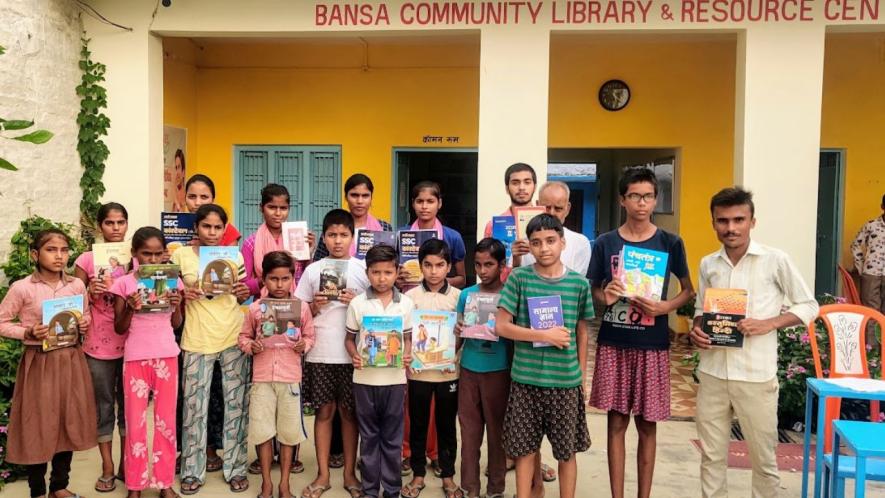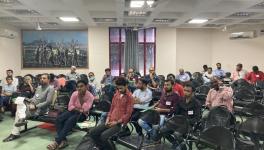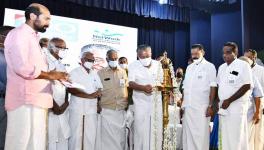Shelves to Screens: Role of Libraries in a Digital World

Image Courtesy: Bansa Community Library
As we celebrate National Librarians’ Day on August 12, and honour the significant contributions of S.R. Ranganathan (known as ‘Father of Library Science’ in India) to library and information science, it is crucial to consider a fundamental question: Do libraries still hold relevance in our technologically advanced world?
When was the last time you enjoyed a book with a cup of tea or felt the urge to share a book’s insights with friends, family, or peers? Gone are the days when we were thrilled at using our pocket money to buy books and couldn’t resist the scent of freshly printed pages. We fondly remember the first books we read and still quote them among friends, with some of their contents vividly etched in our minds. Sometimes, we might cling to a withered rose, treasuring the fond memories we have of an old book.
Decorating our bookshelves with collections used to be a joy, but now we often prefer digital copies accessed through our devices. Many of us are less inclined to visit libraries, knowing that everything we need is available online. It’s become more convenient to relax with a digital device and satisfy our reading interests that way. Perhaps we should acknowledge that we often skim through a few chapters of a book and overlook the deeper context in which it was written.
The origins of the public library movement in India trace back to the late 19th century, marked by the pioneering efforts of Maharaja Sayajirao III and the Gaekwad of Baroda, who established public libraries. Additionally, William Alanson Borden’s library education programmes and S. R. Ranganathan’s work in library legislation and scholarship also played crucial roles in shaping the movement.
As the library system enters its second century of service to the nation, its mission remains to ensure equal access for everyone. It is essential to honour the contributions of those who have championed public libraries and literacy, striving to build stronger communities and uphold the principles of equality for people of all races, ethnicities, and ages.
Recent reports and research highlight a significant shift in library usage patterns in India, with a noticeable decline in physical visits to public libraries and a corresponding rise in digital engagement. According to the National Library of India’s 2019 annual report and various studies, such as those published in the Journal of Library and Information Science (2020) and the International Journal of Library Science, (2018), there is a clear trend toward increased use of digital resources, including e-books and online databases. This decline in footfall is further documented in newspaper articles from The Hindu (2022) and The Times of India (2021), which discuss the impact of digital transformation and the COVID-19 pandemic on library services.
Reports from the National Mission on Libraries (2021) and the Ministry of Education (2022) also reflect these changes, underscoring the need for libraries to adapt to new digital realities. A study done by the Pew Research Centre in 2019 reveals that the time we spend on mobile phones has considerably increased with much dedication toward social media and online streaming platforms rather than books.
According to the 2017 International Federation of Library Associations and Institutions (IFLA) report, The World’s Public Libraries: Key Trends and Statistics, the average Indian public library holds just 5,700 books, significantly fewer than the 108,000 books found in libraries in developed countries.
Furthermore, the 2018 UNESCO Institute of Statistics report, Measuring Information and Communication Technologies for Development, reveals that only 12% of Indian public libraries have computers, and just 8% offer internet access. Additionally, a 2016 Press Trust of India (news agency PTI) article notes that only 10% of the 1.2 million librarians in India are professionally qualified.
The Union Ministry of Culture reports that there are 54,856 public libraries in the country, yet only a small fraction meet international standards. The digital news platform of Times Now TV channel revealed that hectic lifestyles, educational priorities, and economic constraints are bringing change in the reading habits of the people in an article titled “Are we reading fewer books?” (2024)
There was once a strong tradition of book reading and book clubs, though these are now few or rare. Modern lifestyles, with their demanding job descriptions, have left little time for relaxation. A 2022 survey by the National Endowment for the Arts in the United States highlighted that people aged 20-44 are the busiest group and have nearly ceased to engage in leisure reading.
The hectic nature of modern life has significantly altered reading habits, with many now preferring quick, truncated information through apps and online sources rather than engrossing reading experiences. In countries like Japan and South Korea, long commutes and demanding work schedules have led to a preference for audiobooks and e-reading.
The educational system also plays a crucial role in this shift. According to a 2022 report by the National Library of India, while literacy rates have improved, the focus remains on educational books rather than leisure reading. In contrast, Scandinavian countries rank high on the global literary scale, thanks to their regular library visits, emphasis on leisure reading, and promotion of reading habits from an early age.
In developing countries, particularly in rural India, libraries often suffer from underfunding and staffing shortages. A 2023 study revealed that about 60% of children in rural India lack access to libraries. Despite this, some nations prioritise spending on books and libraries. A 2021 report by the Sangai Express highlights that rural areas in India face significant deprivation in reading resources.
Additionally, modern forms of entertainment, such as social media, online games, and OTT platforms, have emerged as major distractions from reading. Surveys indicate that people often spend more than eight hours a day on digital platforms, a stark contrast to the time required for focused, mindful reading.
Urbanisation has led to the emergence of gated libraries, cafes, and coffee shops, creating a division of knowledge based on wealth. While the affluent can easily access these spaces, those from lower socioeconomic backgrounds are often excluded, turning knowledge into a resource only available to the wealthy. This deepens the cycle of inequality and marginalisation, as public libraries decline and lack of internet access further isolates those without resources.
However, new initiatives in India are marking a significant shift in the public library development, aiming to establish accessible spaces for social discourse. Public libraries and makeshift learning centres offer a way to confront and challenge existing power dynamics, providing equal access to knowledge that has increasingly become a commodity controlled by the privileged.
In the 21st century, rural public libraries are emerging as vital civic institutions. These libraries offer open and accessible spaces that help bridge the gap in information access, address digital divides, and reduce disparities between privileged and less privileged individuals, especially children. They serve as hubs of social equality where anyone -- from an elder reading the newspaper to a women's group planning a small business, a teenager enrolling in open school, or a child enchanted by the library’s serene atmosphere- can seek information and resources.
While many district libraries face challenges, they remain popular among students who use them for studying or leisure. To maximise their impact, it’s crucial to revitalise the concept of visiting libraries as an enjoyable activity and support local initiatives. By doing so, libraries can fully realise their potential to foster dialogue, discussion, and inclusivity within communities.
The writer is an Assistant Professor, Department of Sociology, Maitreyi College, University of Delhi. The views are personal.
Get the latest reports & analysis with people's perspective on Protests, movements & deep analytical videos, discussions of the current affairs in your Telegram app. Subscribe to NewsClick's Telegram channel & get Real-Time updates on stories, as they get published on our website.
























